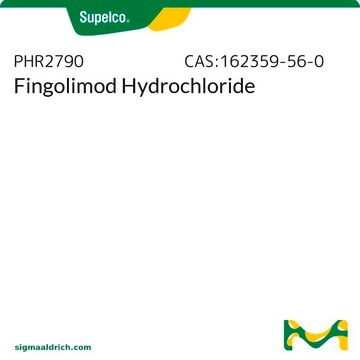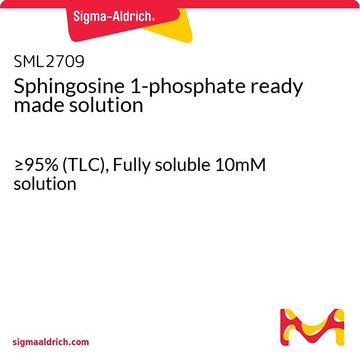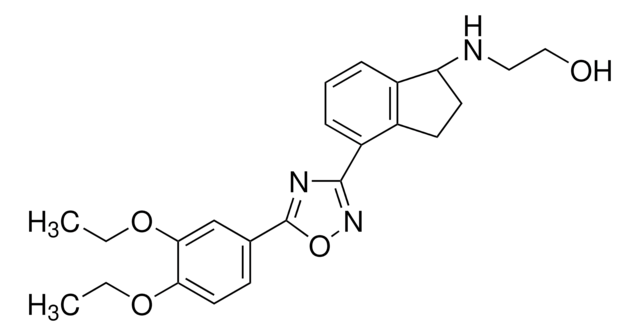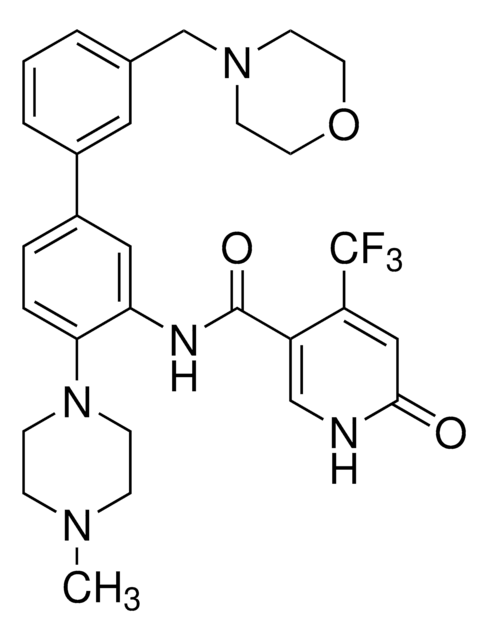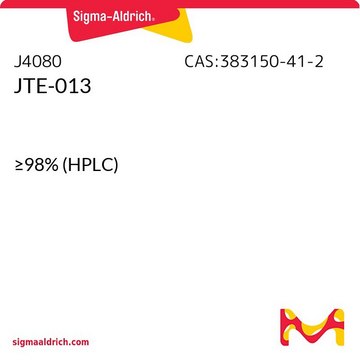S3944
SEW2871
≥98% (HPLC), solid
Synonym(s):
5-[4-Phenyl-5-(trifluoromethyl)-2-thienyl]-3-[3-(trifluoromethyl)phenyl]- 1,2,4-oxadiazole
About This Item
Recommended Products
Quality Level
Assay
≥98% (HPLC)
form
solid
storage condition
protect from light
color
white
mp
94.5-95.3 °C
solubility
DMSO: ≥10 mg/mL
H2O: insoluble
storage temp.
2-8°C
SMILES string
FC(F)(F)c1cccc(c1)-c2noc(n2)-c3cc(-c4ccccc4)c(s3)C(F)(F)F
InChI
1S/C20H10F6N2OS/c21-19(22,23)13-8-4-7-12(9-13)17-27-18(29-28-17)15-10-14(11-5-2-1-3-6-11)16(30-15)20(24,25)26/h1-10H
InChI key
OYMNPJXKQVTQTR-UHFFFAOYSA-N
Gene Information
human ... S1PR1(1901) , S1PR2(9294) , S1PR3(1903) , S1PR4(8698) , S1PR5(53637)
Application
Biochem/physiol Actions
Features and Benefits
Packaging
Storage Class Code
6.1C - Combustible acute toxic Cat.3 / toxic compounds or compounds which causing chronic effects
WGK
WGK 3
Personal Protective Equipment
Choose from one of the most recent versions:
Already Own This Product?
Find documentation for the products that you have recently purchased in the Document Library.
Customers Also Viewed
Our team of scientists has experience in all areas of research including Life Science, Material Science, Chemical Synthesis, Chromatography, Analytical and many others.
Contact Technical Service


